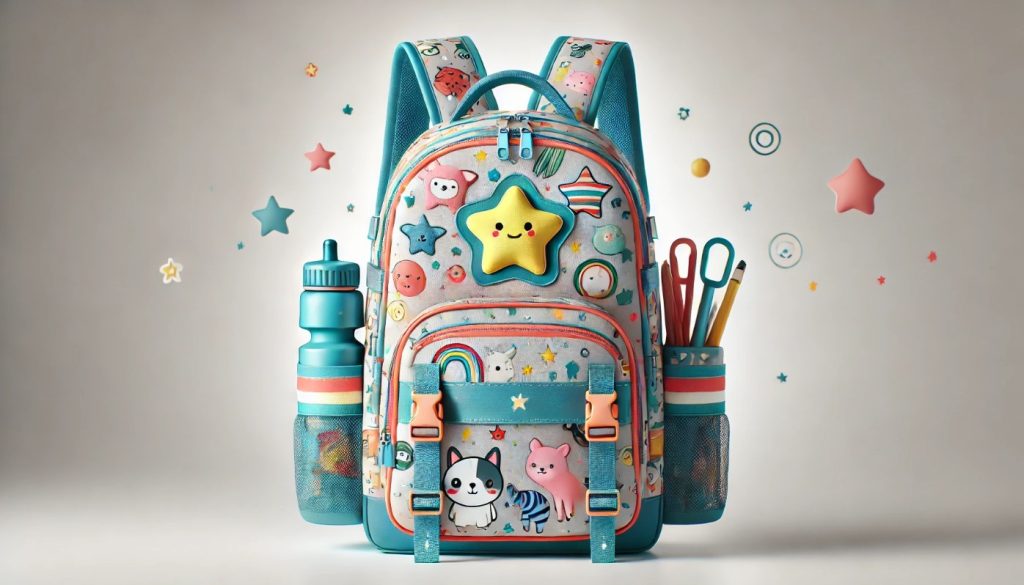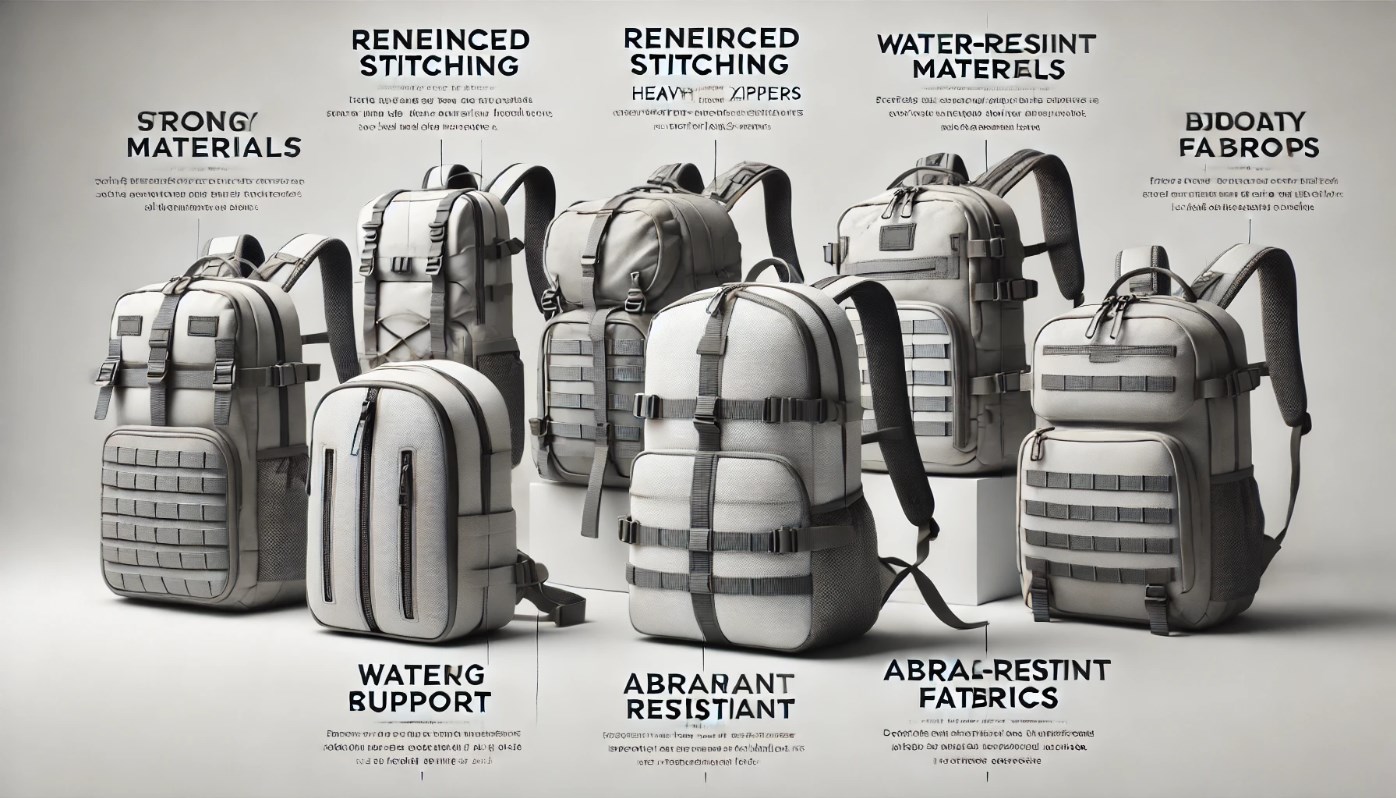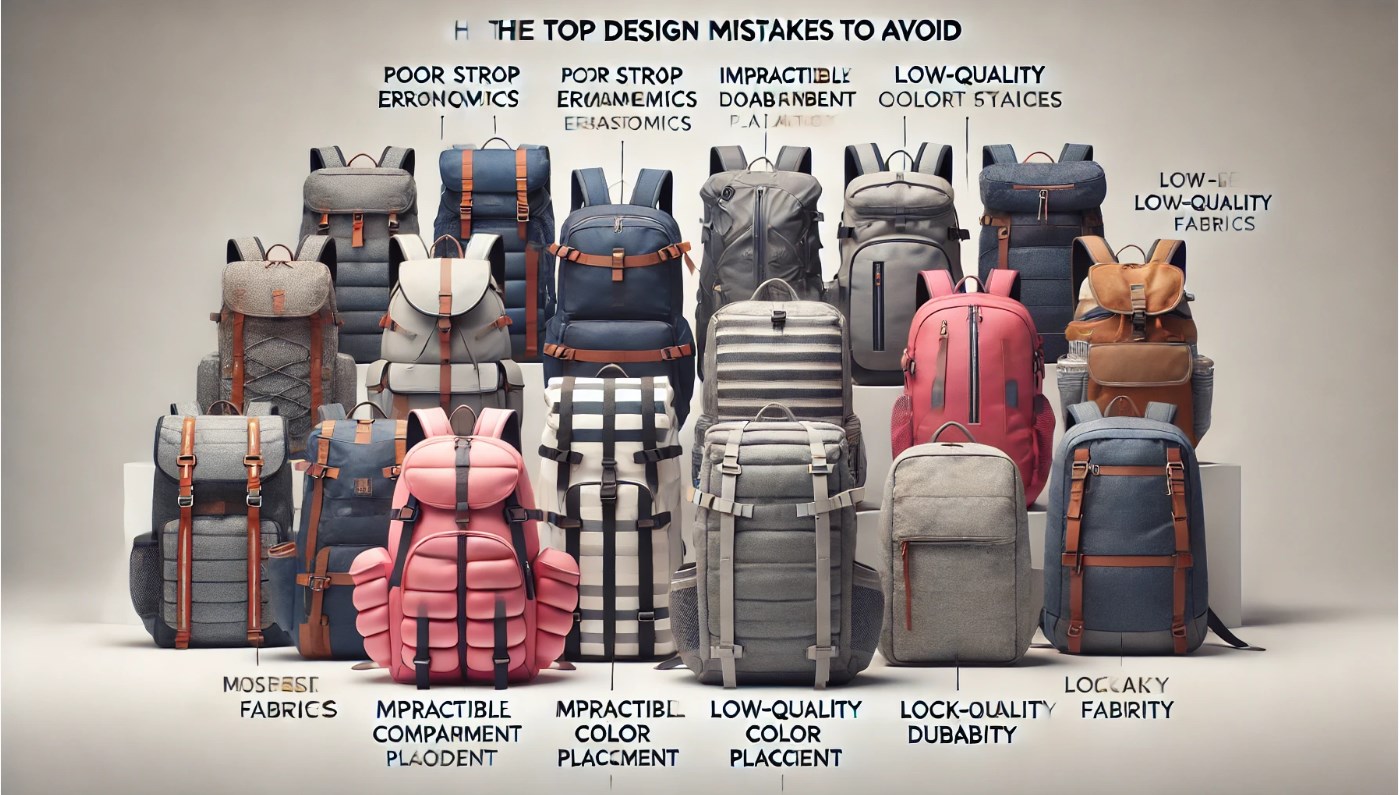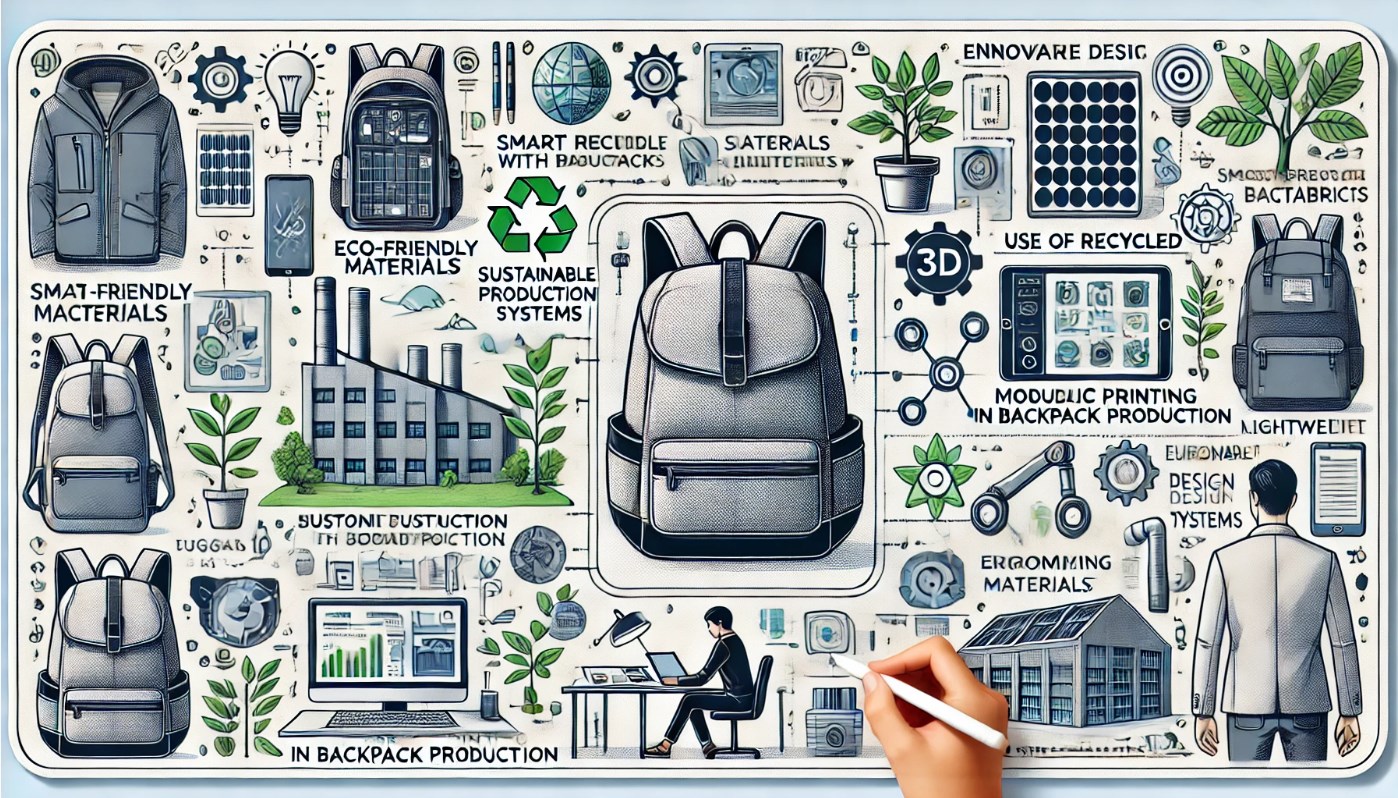Designing the perfect backpack for school kids requires a balance of functionality, comfort, safety, and style. As the primary accessory for carrying books, stationery, lunch, and sometimes electronic devices, school backpacks are an essential part of a child’s daily life. Parents, educators, and kids alike are looking for backpacks that are durable, comfortable, and practical. Furthermore, with increasing awareness of posture and health, there is a growing demand for backpacks that support ergonomic safety.
Backpack Needs of School Kids
Ergonomics and Comfort
One of the most important factors in designing a school backpack is ensuring that it is comfortable and ergonomic for children. Children spend long hours carrying their backpacks, so it’s crucial to focus on weight distribution, padding, and adjustability to prevent strain on their bodies.
Weight Distribution
Backpacks that are poorly designed can lead to shoulder strain and poor posture. A well-designed school backpack should evenly distribute the weight across the back and shoulders. Ideally, the backpack should have both adjustable shoulder straps and a padded back panel to ensure comfort.
For children, a backpack that is too heavy or unevenly distributed can lead to chronic back pain or even scoliosis over time. To prevent this, consider designing a backpack that includes:
- Padded shoulder straps to provide cushioning and reduce pressure on the shoulders.
- Sternum or chest straps to prevent the backpack from slipping off or swaying when walking.
- Hip or waist straps to transfer some of the weight to the hips, helping to reduce strain on the back and shoulders.
- Ergonomically designed back panels that align with the natural curve of a child’s spine to promote proper posture.
Padding and Ventilation
In addition to weight distribution, padding plays a critical role in comfort. Look for materials that provide cushioning in the straps and back panel, helping to prevent discomfort when the backpack is heavy or worn for long periods.
Ventilation is also a crucial consideration for kids, especially during warm weather or when carrying heavy loads. Incorporating breathable mesh panels or ventilation channels in the back of the backpack allows for air circulation, helping to prevent sweating and discomfort during long school days.
Durability and Material Choice
Kids are active, and their backpacks need to withstand the wear and tear of daily use. Durability is therefore a key consideration when designing a school backpack.
Sturdy Materials
The backpack should be made from materials that can resist rips, tears, and abrasions. Common durable materials used in backpack construction include:
- Nylon or Polyester: These materials are lightweight, durable, and resistant to wear and water. Polyester backpacks are especially popular for school use as they are strong and easy to clean.
- Cordura Fabric: Known for its superior durability and resistance to abrasions, Cordura is a great option for backpacks that need to last through years of heavy use.
- Canvas: A sturdy natural fabric, canvas offers a more eco-friendly option and is often used in retro or fashion-forward designs.
- Reinforced Base: A reinforced bottom or base of the backpack will protect against the effects of dragging on the ground or putting the bag down on rough surfaces.
Water Resistance
School backpacks need to protect their contents, especially books and electronics, from the elements. Water-resistant or waterproof materials will help keep items dry in rainstorms. Adding a water-resistant coating or incorporating water-repellent fabrics ensures the backpack can handle unpredictable weather.
Size and Fit
The right size of the backpack is essential to ensuring both comfort and practicality. A backpack that is too large can cause a child to carry more than they should, while one that is too small may not have enough space for all their school essentials.
Backpack Capacity
A school backpack should have enough space for essential items like:
- Books and notebooks
- Lunchbox
- Stationery and pencil case
- Tablet or small electronics (if applicable)
- Water bottle
The backpack should provide ample room for these items without being overly bulky. Look for designs that offer multiple compartments for organization. For instance, separate sections for books, a front pocket for stationery, and a side mesh pocket for a water bottle can make it easier for kids to organize their belongings and access them quickly.
Adjustable Straps
It is important to ensure the backpack has adjustable straps to fit kids of different sizes. The shoulder straps should be long enough to adjust as children grow, and they should be padded to reduce pressure on the shoulders. The backpack should also be sized appropriately for the child’s body, ideally sitting comfortably on the child’s back without excessive strain.
Design Features for Practicality
Organizational Compartments
Kids need to be able to organize their items in a way that is both functional and efficient. A well-organized backpack can help a child stay organized throughout the school day and reduce the chances of forgetting important items.
Consider the following organizational features:
- Multiple compartments: Include a main compartment for books, a separate sleeve for laptops or tablets, and smaller zippered compartments for stationery, pens, and other school supplies.
- Padded laptop sleeve or tablet pocket: With more kids using technology for learning, including a dedicated and padded compartment for electronic devices can keep them safe and secure.
- Mesh side pockets: These are perfect for holding water bottles, snacks, or other small items.
- Front zippered pocket for smaller essentials: A small zippered pocket in the front is ideal for keeping items like keys, ID cards, or pens handy.
Easy Accessibility
School children often rush in the morning, so having a backpack that is easy to open and access is important. Quick-access pockets can help kids grab small items like a pencil case or snack without having to dig through the entire bag. Consider incorporating:
- Wide-mouth openings for the main compartment, allowing kids to easily access and organize their items.
- Zipper pulls that are easy for kids to grab, even with smaller hands or when wearing gloves in colder weather.
- Front-loading designs that allow easier access to items at the bottom of the backpack without having to dig through everything else.
Safety Features
Safety is a paramount concern when designing backpacks for children. Not only do backpacks need to be comfortable and durable, but they must also be designed to keep kids visible and safe while walking to and from school.
Reflective Elements
To increase visibility, especially during early mornings or late afternoons when the daylight may be dim, it’s crucial to include reflective materials in the design. Reflective strips or patches on the front, back, and sides of the backpack ensure that children are visible to drivers and pedestrians, enhancing their safety.
Anti-Theft Features
While not always a priority for younger children, older kids may carry valuable items like smartphones or tablets in their backpacks. Including anti-theft features such as lockable zippers or hidden compartments can offer extra security and peace of mind to parents and children alike.
Stylish and Trendy Designs
While functionality is key, kids also want their backpacks to reflect their personal style. Bright colors, fun patterns, and popular characters or themes can help make a backpack more appealing to children.
Color and Pattern Choices
Backpacks for school kids often come in a variety of colors and patterns to suit different tastes. Consider offering a range of colors, from vibrant pinks and blues to more neutral tones. Patterns like polka dots, stripes, and even custom prints featuring popular characters can help make the backpack unique and exciting.
Customizable Features
Allowing children to personalize their backpacks can make the design more special. Add-ons like detachable patches, keychains, or stickers can offer kids the chance to customize their backpacks, making them feel more ownership over their belongings.
Trendy Details
Incorporating trendy details can help make your backpack stand out in a competitive market. For example:
- Cute or fun zipper pulls in the shape of animals, emojis, or symbols that appeal to kids.
- Interactive features, like backpacks with built-in sound systems or lights, can also appeal to kids who want their backpack to be more than just a functional item.
Sustainability and Environmental Impact
Eco-Friendly Materials
With growing concerns about the environment, designing school backpacks with sustainable materials is becoming increasingly important. Parents and schools are seeking products that align with their values, including the desire to reduce environmental impact.
Materials such as recycled polyester (made from plastic bottles) or organic cotton are excellent choices for reducing the environmental footprint of your backpack. Additionally, backpacks with biodegradable zippers or eco-friendly packaging can further help position your product as a responsible, sustainable choice.
Durability Over Time
The more durable a backpack is, the less likely it is to be replaced, which helps reduce waste. Focus on designing backpacks that are sturdy and built to last, ensuring they can withstand years of school use without falling apart.
Ethical Manufacturing Processes
Sustainability extends beyond materials. The process by which backpacks are manufactured plays a significant role in their environmental and social impact. Consider sourcing materials responsibly, ensuring fair wages and good working conditions for factory workers, and minimizing waste in the manufacturing process. Transparent and ethical manufacturing processes are appealing to both eco-conscious parents and children who want to support brands that care about the environment.
Testing and Feedback
Involving Children in the Design Process
To ensure your school backpacks are a success, it’s essential to get feedback from your target demographic: the children who will be using the backpacks. Organize focus groups or conduct surveys to understand their preferences regarding design, comfort, and functionality.
Testing prototypes with kids of various ages will allow you to identify any potential issues with the design before the product goes to market. This feedback will help you refine your design, ensuring it meets the practical needs of kids and aligns with their personal tastes.
Collaboration with Educators and Parents
Engaging educators and parents in the design process can provide valuable insights. Teachers can share what works best in a classroom setting, while parents can speak to concerns about durability, size, and safety. Collaborative design ensures that your backpack is not only kid-friendly but also functional in the school environment.







